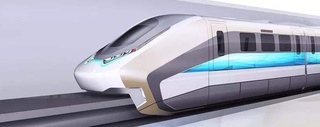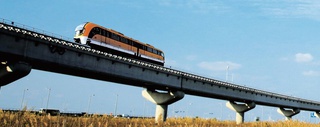The Six Operational Maglev Lines in 2021
You have most probably heard about the Shanghai Maglev line, the fastest operating commercial train, but did you know that there are another five maglev lines in the world for public use? There are two more in China, two in South Korea, and one in Japan. In this article, we list all six lines with data on speed, the date of when they started commercial operation, and other exciting bits.
1. Daejeon Expo Maglev, South-Korea – Since 1993
Hyundai created a 1 km (0.62 miles) maglev track for the Daejeon Expo in 1993 to demonstrate electromagnetic suspension to the public. The urban train runs today on a short track between the Expo Park and the National Science Museum. The Expo Park today attracts over a million visitors annually. The further developed prototype of the HML-series maglev trains, called the UTM-series, is now being used at the Incheon Airport.
- Entry ticket to the Expo Park cost 2,500 won (about $2.5)
- Address: 480, Daedeok-daero, Yuseong-gu, Daejeon

2. Shanghai Maglev, China - Since 2004
Connecting Pudong International Airport with Longyang Road station in Pudong, Shanghai, this maglev line became instantly famous when introduced in April 2004. It was the first high-speed maglev line open to the public. The numbers are staggering:
- It cost $1.2 billion to build
- It covers a distance of 30.5 kilometers (19 miles) in 7 minutes and 20 seconds
- It reaches 431 km/h (268 mph) top speed during the ride
Fourteen years later, and the Shanghai Maglev is still the fastest operating train in the world.

Photo by Andreas Krebs
3. Linimo Maglev, Japan – Since 2005
Japan's first commercial maglev line. It was built to serve the Expo 2005 fair site. It is now operating on the Aichi High-Speed Transit Tobu Kyuryo Line, serving nine stations. While Japan is on track to have the first long-distance ultra-high-speed maglevs, the Linimo has historical importance: it was the world's first unmanned commercial urban maglev.
- The Linimo Maglev runs on a 8.9 km (5.5 mi) track
- Top speed: 100 km/h (62 mph)
- Passangers per day: 16500

Photo by Hans Johnson
4. Incheon Airport Maglev, South-Korea – Since 2016
The Incheon Airport Maglev is an uncrewed commercial maglev train offering a free ride between Incheon International Airport and Yongyu Station. It runs on a 6.1 km (3.8 miles) track every 15 minutes between 9 am and 6 pm with six stations and a 110 km/h (68 mph) operating speed. There are two more stages in planning, 9.7 km and a 37.4 km long one. When the line is completed, it will become a circular line.

Photo by Y Hong
5. Changsha Maglev Express, China – Since 2016
It was the first Chinese developed and built maglev train. Less impressive with its 100 km/h (62 mph) operating speed, it's the technological base for their 600 km/h (373 mph), ultra-high-speed maglev trains. The Changsha Maglev operates on an 18.55 km (11.53 mi) long line connecting three stations between 7 am and 9 pm running every 15 minutes.

6. Beijing S1 Metro Line China – Since 2017
It's the newest and China's third commercial maglev train in operation. It was opened at the very end of 2017, and it now joins Beijing's extensive subway network. The S1 rapid transit line has seven stops, runs on an 8.25 kilometers (5.13 miles) long track at 110 km/h (68 mph) speeds.
As of 2018, these are the maglev trains you can go and take a ride in, and hopefully, many more will join the list. You can also read about the Abandoned Maglev projects here if you would like to know which ones did not make it the light at the end of the tunnel.
Main photo by Y Hong





